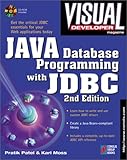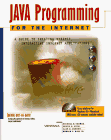Pratik Patel
Developer Advocate @ Azul Systems
Pratik Patel is a Java Champion and developer advocate at Azul Systems and has written 3 books on programming (Java, Cloud and OSS). An all around software and hardware nerd with experience in the healthcare, telecom, financial services, and startup sectors. He's also a co-organizer of the Atlanta Java User Group and North Atlanta JavaScript meetup, frequent speaker at tech events, and master builder of nachos.Presentations
JavaScript Workshop, part I
8:30 AM MDT
Get your skills up to speed for JavaScript, the oft-misunderstood language of the web, in this 2 part workshop. We'll start from the very basics and learn the ins-and-outs of JavaScript. We'll look at the (many) quirks in JavaScript, and work through advanced features that make this language so powerful. Come with an open-mind and ready to dig into code!
This 2 part workshop requires a laptop, and assumes the attendee has ZERO knowledge of JavaScript. We'll break down your bad habits, and build upon known patterns and best practices to raise your JavaScript-fu.
JavaScript Workshop, part II
10:30 AM MDT
JavasScript workshop part II
Get your skills up to speed for JavaScript, the oft-misunderstood language of the web, in this 2 part workshop. We'll start from the very basics and learn the ins-and-outs of JavaScript. We'll look at the (many) quirks in JavaScript, and work through advanced features that make this language so powerful. Come with an open-mind and ready to dig into code!
This 2 part workshop requires a laptop, and assumes the attendee has ZERO knowledge of JavaScript. We'll break down your bad habits, and build upon known patterns and best practices to raise your JavaScript-fu.
Testing JavaScript with Jasmine and Mocha
1:30 PM MDT
Jasmine is a browser centric testing framework. It's the default test framework in Jasmine and is the most popular framework among JavaScript developers. It takes a BDD testing approach.
Mocha is a popular testing framework for JavaScript - for any JavaScript environment, including the Web Browser, NodeJS, and Titanium. It allows for simple asynchronous testing, test coverage, and integration to CI tools. In this session, learn all you need to know about getting started for writing beautiful tests in JavaScript for these environments. We’ll discuss a number of add-ons for Mocha to make testing a breeze. We’ll talk about “should” and “chai” for expectation matching. We’ll discuss “simon” for mocking in your test cases. We’ll also talk about test automation with Grunt.
This session is a code-driven class that covers the Jasmine and Mocha JavaScript testing library. It is an introductory level session.
Functional JavaScript
3:15 PM MDT
JavaScript has a mixed heritage: OO and Functional. To date, us developers have focused on the OO side of JavaScript and not much mind-share has been given to the other, more powerful side. In this session we'll explore how to use the power of functional Javascript.
JavaScript has elements of two distinct programming languages: Self and Scheme. These two languages are very different - and some of JavaScript's weirdness is due to this mixing of very different language designs. The conceptual models are also very different between Self and Scheme - one is a prototypical object based language, while the other is a functional language. In this session, we'll discuss the elements of how the Scheme functional programming language manifest in JavaScript. We're going to explore how you can write JavaScript in a more elegant and powerful way by applying functional concepts.
JavaScript Design Patterns
5:00 PM MDT
We've come a long way down the JavaScript road. Gone are the days of 'just hack it' for the web - architecting even a small project in JavaScript can be a challenge. Thankfully, there are several frameworks to help you; the most popular currently is Backbone.js.
Before you start using a framework in JavaScript, you will want to understand the techniques expert JavaScript programmers use to build them. In this session, we'll dive into design patterns in JavaScript, and do live coding so you can see these patterns applied. Even if you're not using a framework, you can use these design patterns to make your code more maintainabile, elegant, and concise.
Software dev's guide to hardware hacking
8:30 PM MDT
The world of hardware hacking has been gaining popularity recently. With the advent of open-source hardware, there's been tremendous interest in hacking hardware again. In this session, we'll look at two popular hardware platforms: Arduino and RaspberryPi. We'll also look at how to integrate the Arduino with Android to build a cheap, complete hardware hacking platform, all written in Java!
We'll go over the current open hardware scene first. Then we'll look at how to setup these two platforms. Of course, we'll write some code and deploy them onto the hardware!
Working with Data on the Client (Mobile and Web)
5:00 PM MDT
In this session, we’ll look at some of the options for storing application and user data, such as simple JSON and SQLite. We’ll discuss the details of deciding to use SQL or a NoSQL solution. We’ll look at how to architect a data-driven web / mobile app, strategies for server synchronization, and take a deep dive into working with datasets in JavaScript.
Working with data in Web browsers can be tricky - fortunately the IndexedDB standard has come forward to help developers organize and store data. On mobile platforms, Phonegap allows the use of both IndexedDB and SQLite. Titanium, and open-source native platform for mobile based on JavaScript, also has a host of options for storing application and user data. We'll look at utilizing IndexedDB in Web Browsers, Phonegap and Titanium. We'll also see how to leverage SQLite in Phonegap and Titanium. This is a code-heavy session and all the code will be in JavaScript.



